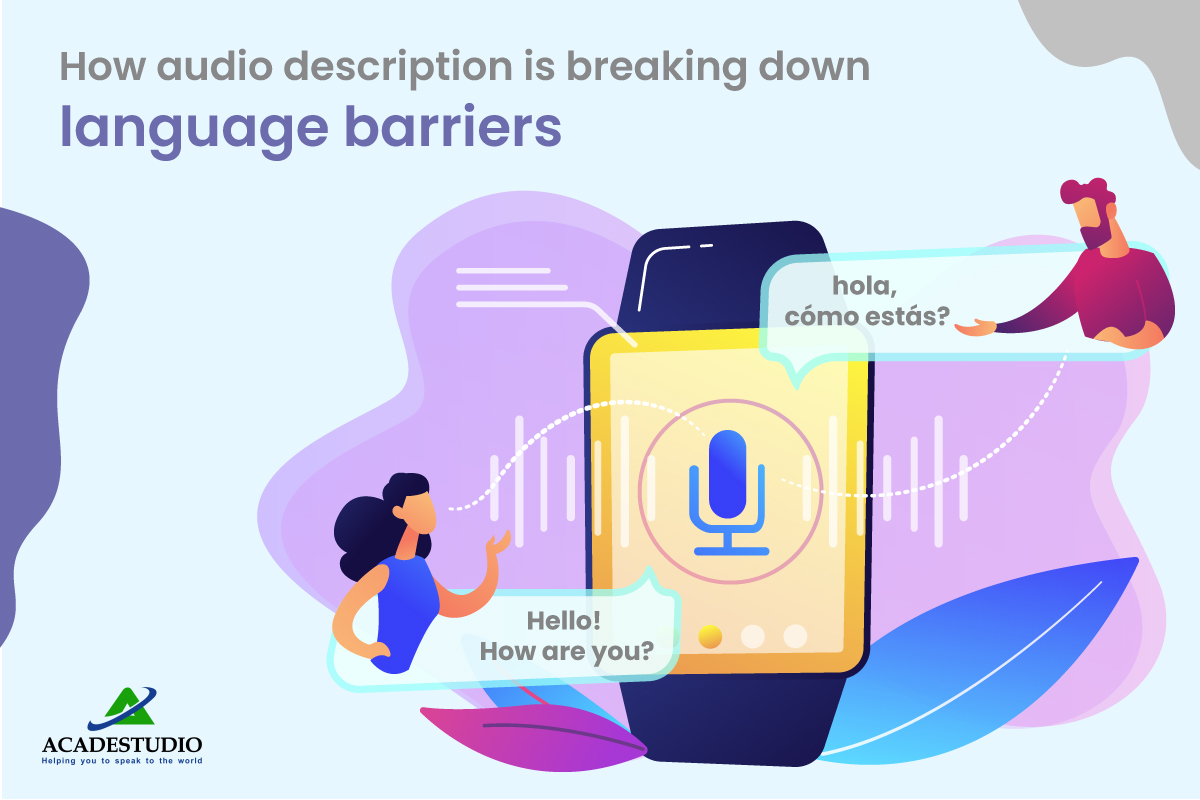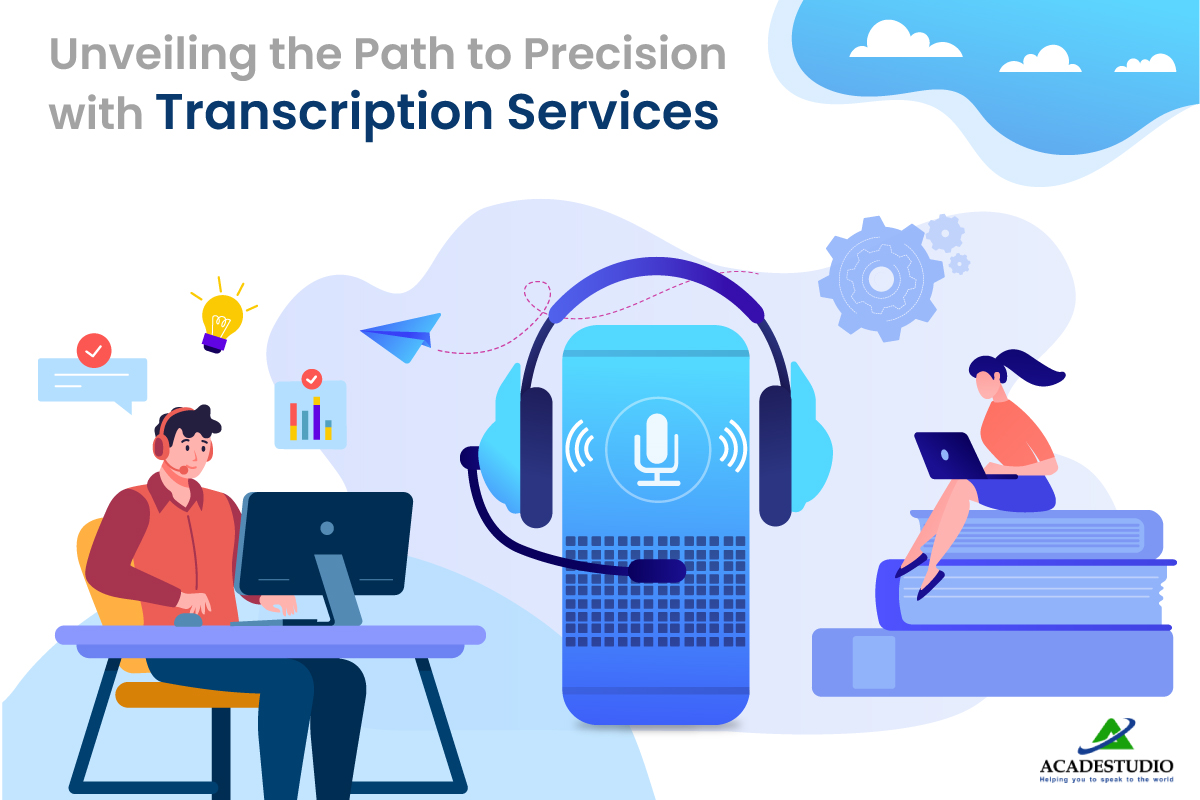Transcription has
evolved into a vital instrument in academic study. Its importance cannot be
emphasized since it gives numerous advantages to researchers. Transcription has
transformed the study process, from enhancing accuracy to enabling more
profound analysis. This blog post will examine five significant advantages of Transcription in Academic Research.
Understanding these benefits can help you make the most of this great tool,
whether a student or a seasoned researcher. Therefore, without further ado,
let's get started and see how transcription can assist you in furthering your
research.
Benefits of
Transcription in Academic Research
Transcription is often used in academic
research as part of a larger data collection strategy. However, it can also be
used independently, for example, by students who are looking to improve their
writing skills by having to transcribe audio material. Below are the benefits
of Academic Research transcription:
1. Improved Data
Accuracy and Accessibility
Transcription in
Academic research offers significant benefits, improving data accuracy and
accessibility. Firstly, transcription enables researchers to analyze recorded
data meticulously. Converting speech to text captures essential information
with high precision, reducing errors. Moreover, transcription aids researchers
in obtaining in-depth insights, allowing them to identify patterns and trends.
Consequently, this results in accurate interpretations, strengthening research
validity.
Equally important,
Transcription Services cater to multiple languages, ensuring
researchers can access a broader range of data. This feature promotes
inclusivity, allowing the study of diverse populations without language
barriers. In turn, researchers gain a more comprehensive understanding of their
subjects. Furthermore, transcription benefits individuals with hearing
impairments, ensuring equal access to valuable research data.
Consequently,
Transcription in Academic research contributes to a more inclusive academic
community, fostering collaboration among diverse groups. This accessibility
extends to those seeking to study archived materials, as well. Transcription
simplifies data sharing among colleagues, promoting interdisciplinary collaboration.
As a result, researchers from various fields can contribute their expertise,
enhancing the quality of academic studies. Undoubtedly, transcription plays a
vital role in improving data accuracy and accessibility, contributing to more
robust academic research.
2. Enhanced Multimodal Analysis
Transcription in
academic research boasts numerous advantages, with enhanced multimodal analysis
being a significant benefit. Firstly, transcription enables researchers to
integrate audio, visual, and textual data, fostering comprehensive data
analysis. This approach results in a richer understanding of research subjects,
ultimately enriching research outcomes.
Moreover, transcription
facilitates the detection of hidden patterns within audio or video recordings.
Consequently, these
insights contribute to a deeper comprehension of research topics, bolstering
the overall conclusions. Transcription also allows for diverse analytical
techniques, such as content analysis, discourse analysis, and thematic
analysis. Transcription also helps analyze nonverbal information like facial
expressions and body language. Hence, data nuances deepen researchers'
understanding of their subjects. These findings support research on nonverbal
cues.
Transcriptions allow
sociolinguistic and pragmatic study. Its comprehensive approach encompasses
cultural, social, and linguistic factors. This comprehensive approach enhances
subject comprehension. Academic transcription compares data from many sources
to find trends and abnormalities. This comparison helps students understand
their difficulties. Data triangulation enhances research validity.
Transcriptions track changes in longitudinal research. Long-term trend
monitoring improves study subject understanding. Cause-and-effect connections
from longitudinal studies boost research.
Finally, transcribing
helps researchers present their findings. Accessibility supports knowledge
distribution, collaboration, and academic field development. Transcriptions
help policymakers, practitioners, and the public understand study findings.
3. Facilitates Collaborative Research
Transcription in
academic research offers many benefits, including facilitating collaborative
research. Firstly, transcription promotes efficient information sharing among
researchers, as written records are quickly disseminated and understood. This
streamlined process fosters better communication and cooperation among team
members.
Moreover, transcription
enables researchers from diverse backgrounds to work together, overcoming
language and comprehension barriers.
Consequently, this
inclusivity supports broader perspectives, enriching research outcomes.
Furthermore, transcription encourages interdisciplinary collaboration, as
accessible data attracts experts from various fields. Transcription also
facilitates distant communication among researchers. Its flexibility encourages
global research cooperation and breakthrough discoveries. Transcription helps
researchers share data and thoughts. Transcriptions allow researchers to assign
and track tasks, keeping teams on pace. So, a better organization improves
research. Transcribing team contributions also promotes accountability and openness.
Transcription helps
researchers reuse data. Resource optimization enhances discovery and
innovation. Transcription also facilitates cross-institutional collaboration by
making data widely accessible to academics.
4. Streamlined Data Organization and Analysis
Transcription in
Academic research simplifies data organizing and analysis. First, transcribing
helps researchers find specific data quickly and efficiently. Its efficient
organization improves research efficiency. It also allows academics to organize
and tag data for easy access. This organization strategy reduces errors and
oversights, improving study quality. It also promotes structured datasets,
simplifying data management and analysis.
Text mining and
sentiment analysis are also supported. So researchers can quickly identify data
patterns and connections. Transcription helps integrate data analysis software,
improving research productivity. Transcriptions help academics find trends and
outliers by comparing data from different sources. This comparison technique
helps scholars comprehend their issues better. Transcription also triangulates
data, boosting research credibility.
It helps researchers
visualize their findings via data visualization tools. These visualizations
help academics find trends and form conclusions. Visualizations make study
results easier to communicate, so transcribing helps. Transcriptions in
academic research help in identifying important material by creating searchable
databases. Its searchability frees up time and energy for data analysis and
interpretation. Transcription also facilitates teamwork by organizing and
searching material.
5. Supports Inclusivity and Diverse Learning Styles
Transcription in
Academic research benefits inclusivity and varied learning styles. First,
transcribing allows deaf and hard-of-hearing researchers to access data. So,
this accessibility gives various researchers equal possibilities. It helps
non-native English speakers by writing complex audio content. This conversion
simplifies comprehension, breaks linguistic barriers, and encourages
collaboration. Transcription enhances research and cross-cultural understanding
by integrating multiple perspectives. It also accommodates reading-oriented
learners. So, regardless of learning style, researchers can properly examine
data with this accommodation. Transcription allows researchers to revisit data
at their leisure, promoting deeper study.
Transcription in
Academic research helps create captions and subtitles for lectures and
presentations. So, this feature aids hearing-impaired and language-challenged
users. In noisy or slow internet situations, captions and subtitles improve
comprehension. Transcription also makes podcasts, interviews, and other audio
material transcripts. So, this provision helps policymakers, practitioners, and
the public access research findings. It promotes knowledge sharing,
collaboration, and academic discipline development.
Conclusion
In conclusion, utilizing transcription in
academic research is a game-changer. The above-mentioned benefits provide you
with the idea of academic transcription. Embracing transcription services
enables researchers to optimize their work, ensuring a more efficient,
collaborative, and accessible research process, ultimately enriching research
outcomes and driving innovation across academic disciplines.












- From Mobile - 11 min ago
Bring to the table win-win survival strategies to ensure proactive domination. At the end of the day, going forward, a new normal that has evolved from generation X is on the runway heading towards a streamlined cloud solution.
- From Mobile - 7 min ago
Capitalize on low hanging fruit to identify a ballpark value added activity to beta test. Override the digital divide with additional clickthroughs from DevOps. Nanotechnology immersion along the information highway
- From Web - 2 min ago
A new normal that has evolved from generation X is on the runway
- From Mobile - 11 min ago
Capitalize on low hanging fruit to identify a ballpark value added
- From Web - 2 min ago
Real-time will have multiple touchpoints for offshoring.